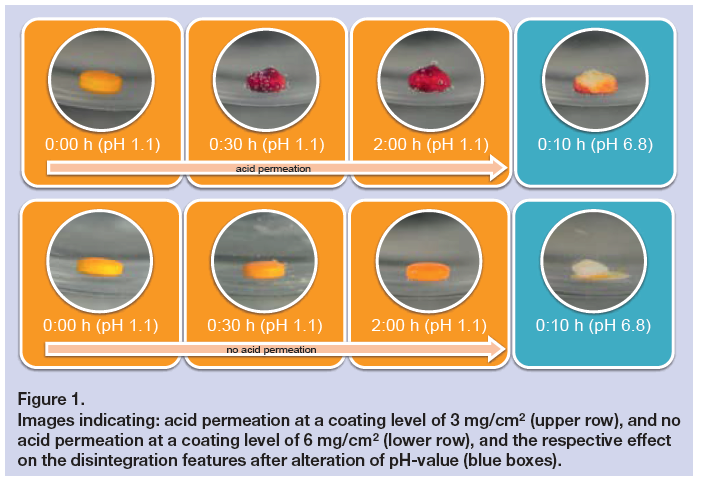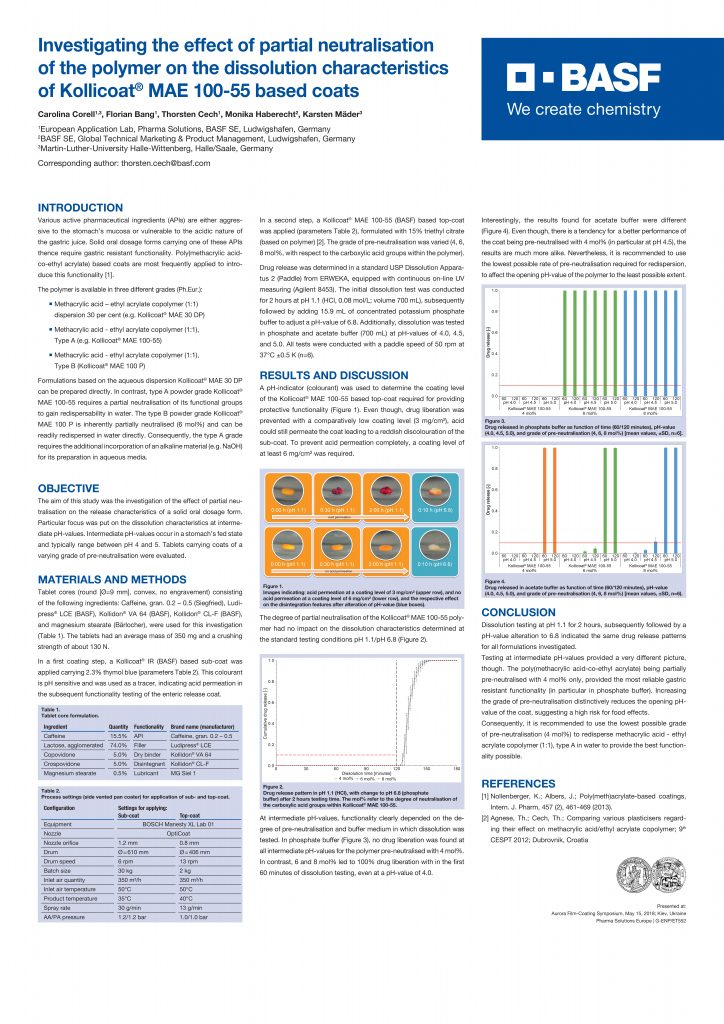Investigating the effect of partial neutralisation of the polymer on the dissolution characteristics of Kollicoat® MAE 100-55 based coats

Various active pharmaceutical ingredients (APIs) are either aggressive to the stomach’s mucosa or vulnerable to the acidic nature of the gastric juice. Solid oral dosage forms carrying one of these APIs thence require gastric resistant functionality. Poly(methacrylic acid-co-ethyl acrylate) based coats are most frequently applied to introduce this functionality.
The polymer is available in three different grades (Ph.Eur.):
- Methacrylic acid – ethyl acrylate copolymer (1:1) dispersion 30 per cent (e.g. Kollicoat® MAE 30 DP)
- Methacrylic acid – ethyl acrylate copolymer (1:1), Type A (e.g. Kollicoat® MAE 100-55)
- Methacrylic acid – ethyl acrylate copolymer (1:1), Type B (Kollicoat® MAE 100 P)
Formulations based on the aqueous dispersion Kollicoat® MAE 30 DP can be prepared directly. In contrast, type A powder grade Kollicoat® MAE 100-55 requires a partial neutralisation of its functional groups to gain redispersability in water. The type B powder grade Kollicoat® MAE 100 P is inherently partially neutralised (6 mol%) and can be readily redispersed in water directly. Consequently, the type A grade requires the additional incorporation of an alkaline material (e.g. NaOH) for its preparation in aqueous media.
The aim of this study was the investigation of the effect of partial neutralisation on the release characteristics of a solid oral dosage form. Particular focus was put on the dissolution characteristics at intermediate pH-values. Intermediate pH-values occur in a stomach’s fed state and typically range between pH 4 and 5. Tablets carrying coats of a varying grade of pre-neutralisation were evaluated.
Click image to enlarge: MORE ON BASF
MORE ON BASF
See our webinar on the enteric coatings module of ZoomLab™:


